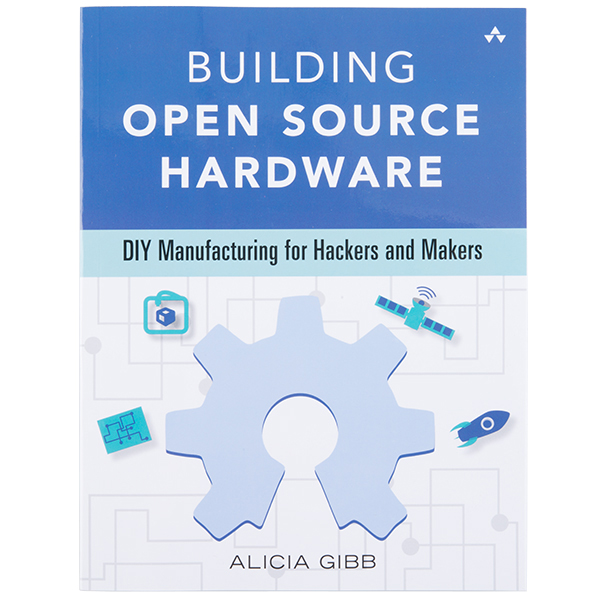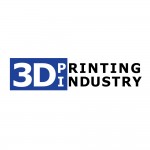In this article looking at the future of 3D printing, Alicia Gibb and Michael Weinberg from the Open Source Hardware Association review the importance of Open Source for the 3D printing industry industry.
Alicia Gibb is an advocate for open hardware, researcher, and a hardware hacker. Alicia has worked within the open source hardware community since 2008. She is the founder and Executive Director of the Open Source Hardware Association (OSHWA), an non-profit organization to educate the benefits of building and using open source hardware.
Michael Weinberg, Board President of OSHWA, is the author of several notable publications on the subject of including 2010’s, “It Will Be Awesome If They Don’t Screw It Up: 3D Printing, Intellectual Property, and the Fight Over the Next Great Disruptive Technology.” Weinberg’s work at Washington D.C. think tank Public Knowledge was instrumental in bringing a rational perspective to political concerns around 3D printing. He is now IP & General Counsel at Shapeways.
The Future of 3D printing is Open Source
By Alicia Gibb, Executive Director of OSHWA, and Michael Weinberg, Board President of OSHWA
Openness has fueled the last five years of 3D printing and will continue to fuel the next five. The open source RepRap project, which spawned too many desktop printers to count, was both directly and indirectly responsible for introducing 3D printing to companies, schools, and individuals around the world. Without open source 3D printing, today’s 3D printing industry would likely still be a gradually expanding niche manufacturing technology (and would probably still be known to most people who knew about it as additive manufacturing).
The openness of these desktop 3D printers allowed an international network of specialists to work together, constantly driving down prices, driving up quality, and generally increasing access to the technology. Being open source means that they are easy to adapt to new fields, be it bioprinting or fine dining. These examples leverage the importance of community which open source sectors depend on.
Today almost all top desktop printers are open source or built on open source technology. We are even starting to see fully open sourced 3D printing filament.
“As patents expire, open source alternatives will rush to fill the space”
Fortunately, openness builds upon openness. That means that the work of the past five years will fuel continued growth and innovation for the next five. The virtuous cycle of innovation, interest, and contribution will bring even more people into the world of 3D printing which will allow 3D printing to expand into even more parts of society. That improves the core 3D printing process, and also increases the likelihood that core 3D printing processes will be adapted to meet new needs.
This increasing interest and application is built upon a foundation of expiring patents. These expiring patents expand the public domain of knowledge that can be integrated into (and improved by) existing machines. As patents expire, open source alternatives will rush to fill the space – exactly how the patent system is designed to work; and a strong indicator that open source pushes innovation.

Open source 3D printers moving into industrial settings
While traditionally thought of as oriented towards individuals, educational institutions, and small commercial players, we are already seeing open source printers deployed in larger industrial settings. Bot farms that network together many printers allow them to be operated by small, specialized teams. As open source printing expands beyond its fused filament roots, we are also likely to see open source printers that more explicitly target the enterprise market. Just as open source software companies such as Red Hat have found profit in the enterprise software market, the next great open source hardware printer may lock in on the enterprise open source 3D printer market.

Open source 3D printing critical to everyone
As more materials get added to the 3D printing landscape, another interesting industry we may see open source 3D printers spur is the possibility of printing components or turning into desktop chip fabs. Innovation could leverage 3D printer innovation coupled with new materials in interesting ways and rethink desktop pick and places and the currently closed source integrated circuit industry.
Ultimately, open source 3D printing is not a rival for less open alternatives. Instead, it is a key source of innovation, enthusiasm, and expertise. That makes the open source aspect of 3D printing critical to everyone in the 3D printing industry.
More information about OSHWA is available here.
For further insights into the future of 3D printing, sign up to our newsletter and follow our active social media channels. Let us know your thoughts about this perspective on the future of 3D printing in the comments below.
This is a guest post in our series looking at the future of 3D Printing. To celebrate 5 years of reporting on the 3D printing industry, we’ve invited industry leaders and 3D printing experts to give us their perspective and predictions for the next 5 years and insight into trends in additive manufacturing.
If you’d like to participate in this series then contact us for more information.



